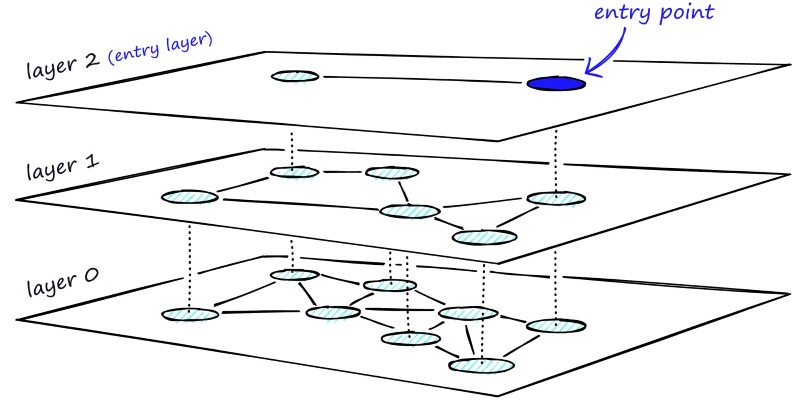Advertisement
When you're working with Python, knowing how to stop your program is just as important as knowing how to start it. Whether you're testing your code in the terminal, managing system resources, or handling unexpected errors, choosing the right way to exit your program can make a big difference. Python offers a few different exit commands—quit(), exit(), sys.exit(), and os._exit()—each serving a specific purpose. In this article, we'll break down these exit commands, explore when and why you’d use each one, and help you decide which is best for your next Python project.
In Python, quit() and exit() are built-in functions designed to end a program, but they’re specifically tailored for interactive sessions. These commands come from the site module, which gets imported automatically when you start the Python interpreter. While they may seem nearly identical, there are subtle differences in their intended use that are important to understand.
The quit() function is mainly used when you're working in the interactive Python shell. It's your go-to command when you want to gracefully stop the interpreter and exit the session. Simply typing quit() in the shell allows you to cleanly end the Python session after testing or debugging your code. This makes it particularly useful for individuals who need to quickly wrap up tasks in an interactive environment.
Similarly, exit() serves the same purpose and works in nearly the same way as quit() in an interactive session. It provides a smooth exit from the Python shell. However, in a script, both quit() and exit() raise a SystemExit exception, so they're not best for non-interactive situations. These two commands essentially provide a quick exit option when testing or using the Python interpreter directly rather than running full programs.
Unlike quit() and exit(), sys.exit() is specifically designed for use in Python scripts. It is part of the sys module, and its primary purpose is to stop the execution of a Python program. When you call sys.exit(), it raises a SystemExit exception, which can be caught if needed. This gives developers more control over how their programs end.

One of the main benefits of using sys.exit() is that it can be called from anywhere in a program, whether it’s a function, a class, or in the main execution flow. This makes it far more versatile in script-based programming. For instance, if you’re writing a script that processes data and encounters an error, you might use sys.exit() to halt execution and return a specific error code to the operating system. This is especially useful in larger programs that need to return specific exit statuses to indicate success or failure.
In addition to terminating the program, sys.exit() can also accept an optional argument. If no argument is passed, it defaults to exiting with a status code of 0, indicating a normal exit. However, you can pass an integer or a string to specify a different exit code. A non-zero exit code typically indicates that something went wrong during execution, which can be helpful for debugging or monitoring.
For more advanced use cases, especially when dealing with multi-threaded applications or low-level system interactions, the os._exit() function comes into play. Unlike the other exit commands, os._exit() is a low-level method that immediately terminates the Python program without raising an exception. This function is found in the os module, and it is typically used in scenarios where you want to forcefully shut down a program.
The key difference between os._exit() and the other exit methods is that it does not perform any cleanup operations. When you call os._exit(), the Python interpreter doesn’t execute any final blocks or cleanup code, and it doesn't raise a SystemExit exception. This can be useful in cases where you want to terminate a program in a very controlled manner, for example, when working with child processes in multiprocessing applications.
One important consideration when using os._exit() is that it doesn't allow you to handle exceptions or run code that would normally execute during a graceful program shutdown. Therefore, it should only be used when you are sure you want to end the program without going through the usual termination process. It’s typically reserved for advanced Python users who need to interact directly with the operating system.
At a glance, quit(), exit(), sys.exit(), and os._exit() may appear to serve the same purpose—terminating the program—but they have distinct differences that make each one suitable for specific contexts. Understanding these differences can help you decide which one to use based on the situation you're facing.
If you're in the Python shell and want a clean exit, either quit() or exit() will do the job. Both are tailored for interactive environments, offering a simple and user-friendly way to exit the interpreter.

For terminating a program in a script or application, sys.exit() is the preferred method. It provides flexibility and control, especially when you want to handle exceptions or return specific status codes.
When you need to forcefully terminate a program, especially in multi-threaded or multi-process applications, os._exit() is the best option. However, it should be used cautiously due to its immediate termination without any cleanup.
Each Python exit command serves a specific purpose: quit() and exit() are ideal for interactive sessions, while sys.exit() is better for scripts, offering more control. os._exit() should be used only in situations requiring low-level program termination, like in multi-threaded or multi-process applications.
Knowing which exit command to use in Python is crucial for writing clean, efficient, and reliable code. Whether you are working in the interactive shell or writing complex scripts, selecting the correct exit method ensures your program behaves as expected. quit() and exit() are perfect for interactive use, while sys.exit() is better suited for scripts that require error handling and specific exit codes. Lastly, os._exit() provides the lowest-level control over program termination, though it should be used sparingly. By understanding the nuances of these exit commands, you can write Python code that is more intuitive, flexible, and robust.
Advertisement

IBM showcased its agentic AI at RSAC 2025, introducing a new approach to autonomous security operations. Learn how this technology enables faster response and smarter defense

What's changing inside your car? A new AI platform is making in-car assistants smarter, faster, and more human-like—here's how it works

Learn the top 5 AI change management strategies and practical checklists to guide your enterprise transformation in 2025.

Writer unveils a new AI platform empowering businesses to build and deploy intelligent, task-based agents.

Sam Altman returns as OpenAI CEO amid calls for ethical reforms, stronger governance, restored trust in leadership, and more

Ready to make computers see like humans? Learn how to get started with OpenCV—install it, process images, apply filters, and build a real foundation in computer vision with just Python

How does Docmatix reshape document understanding for machines? See why this real-world dataset with diverse layouts, OCR, and multilingual data is now essential for building DocVQA systems

Explore the different Python exit commands including quit(), exit(), sys.exit(), and os._exit(), and learn when to use each method to terminate your program effectively

Learn how HNSW enables fast and accurate approximate nearest neighbor search using a layered graph structure. Ideal for recommendation systems, vector search, and high-dimensional datasets

How MPT-7B and MPT-30B from MosaicML are pushing the boundaries of open-source LLM technology. Learn about their architecture, use cases, and why these models are setting a new standard for accessible AI

Know how AI transforms Cybersecurity with fast threat detection, reduced errors, and the risks of high costs and overdependence

Snowflake's acquisition of Neeva boosts enterprise AI with secure generative AI platforms and advanced data interaction tools